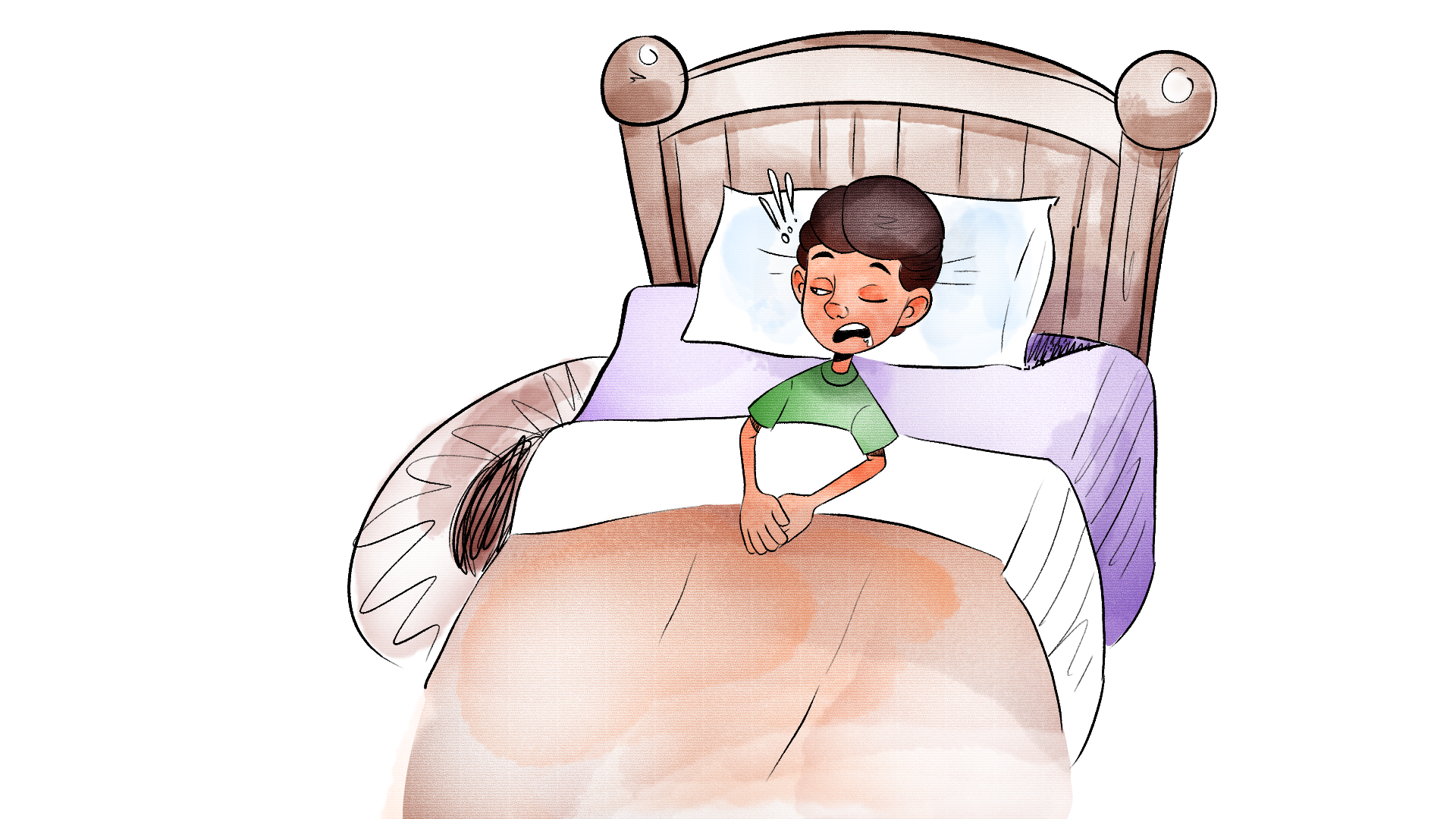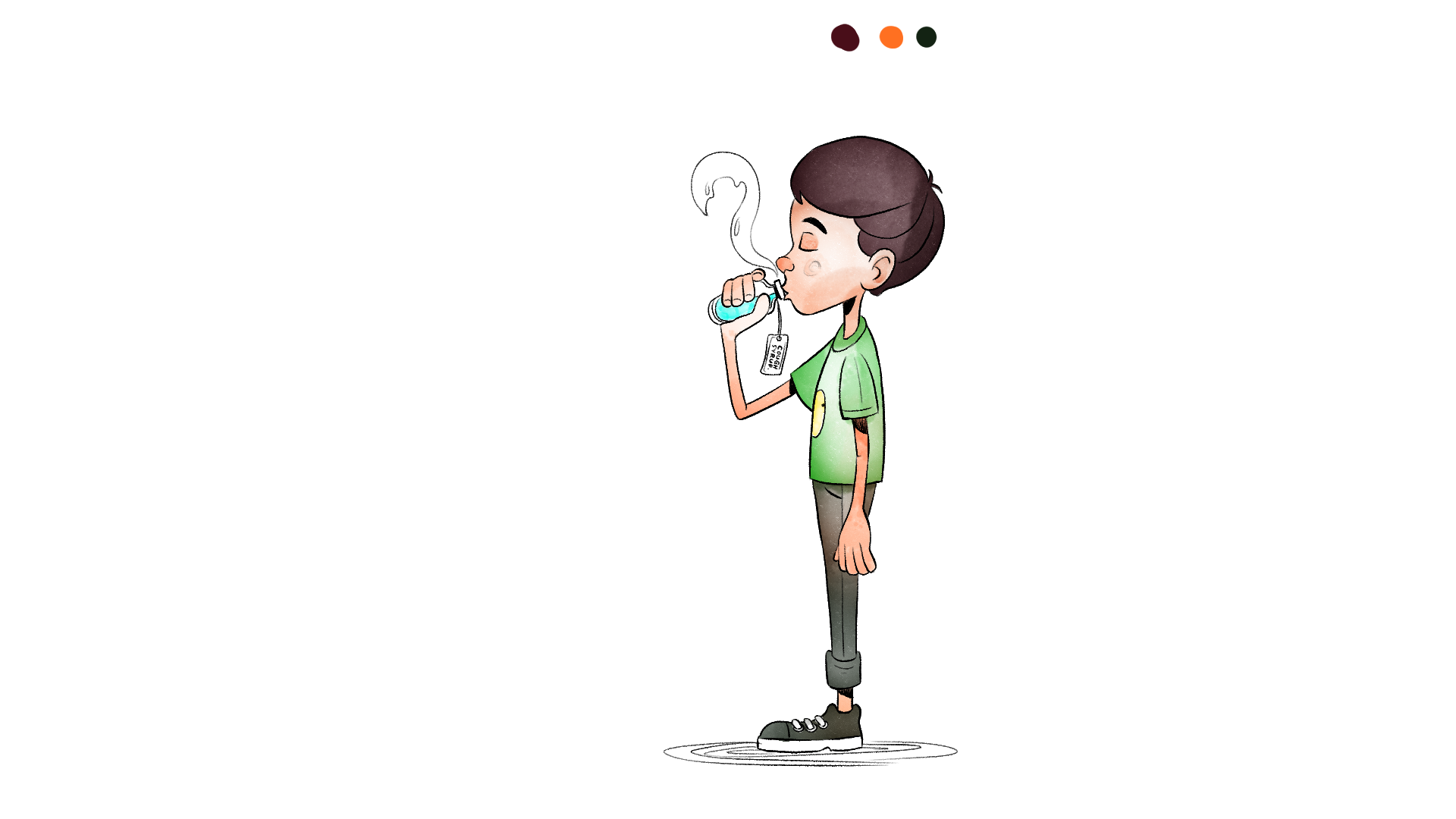💪🏾The Man of the House – Frank O’Connor
Subject Matter: What the Story is About?
- The tale centers around Sullivan, a young boy who willingly stays home from school to care for his unwell mother.
- Playing the role of both nurturer and provider, Sullivan tends to household chores such as lighting the fire and preparing breakfast.
- His devotion extends to a journey to the public house and dispensary to fetch whisky and cough medicine.
- Despite his limited travels, Sullivan bravely ventures to the dispensary to secure the doctor-prescribed cough syrup.
- However, an unexpected twist occurs when a clever little girl at the dispensary dupes him into consuming his mother’s vital cough syrup.
- Returning home, Sullivan is left feeling unwell, burdened by guilt, and deeply disappointed that he unintentionally let down his cherished mother in her time of need.

Plot
The narrative unfolds through the following events:
- One morning, Sullivan is stirred awake by the sounds of his mother coughing in the kitchen below.
- Descending the stairs, he ushers her back to bed and takes charge of preparing breakfast.
- Opting to remain home from school that day, Sullivan assumes the role of caretaker for his ailing mother.
- He embarks on errands, procuring eggs and sausages for dinner and visiting the chemist to acquire a potent cough syrup.
- In the evening, Sullivan heads to the public house to purchase whisky for his mother.
- The next morning, he sets out to fetch the doctor. However, a detour to the Poor Law Guardian is required for a fee-exemption ticket.
- The doctor arrives, prescribing cough medicine for Sullivan’s mother.
- En route to the dispensary, Sullivan passes the cathedral, vowing to return and purchase a candle with the penny from his mother to pray for her swift recovery.
- At the North Dispensary, Sullivan encounters a worldly little girl who persuades him to consume all of his mother’s cough syrup, spending the penny on sweets.
- Consumed by guilt and shame after drinking his mother’s medicine, Sullivan seeks redemption at the cathedral, kneeling before the Shrine of the Blessed Virgin Mary and pleading for forgiveness and a miracle.
- Returning home, Sullivan is saddened and disappointed and confronts the consequences of being deceived by the little girl.
- The resolution unfolds as Sullivan falls ill upon his return home. His mother, now the caregiver, tends to him. Upon awakening, Sullivan sees his mother smiling with a candle in hand – the cared-for becoming the carer.

Conflict
- The conflict is between Sullivan and himself: inner conflict.
- Even though Sullivan knows that it is wrong for him to drink his sick mother’s medication, he still does so.
- He goes against his conscience and drinks it despite his good intentions to take it home for his sick mother.
- There is also conflict between Sullivan and the little girl who encourages him to drink the medicine.

The Significance of the Story’s Title
At the tender age of ten, Sullivan bears the weighty title of ‘man of the house.’ This label, while initially portraying him as mature and responsible, takes on poignant irony as the story unfolds.
Setting
- The broader context is East York, Ireland, but the heart of the story beats within Sullivan’s home on the Old Youghal Road.
- In this private setting, domestic and structural challenges take center stage, focusing on the unique relationship dynamics between Sullivan and his mother as they navigate life alone.
Characters
This is a list of some. of the most central characters
Sullivan
- Sullivan stands as the central figure in this narrative.
- He emerges as the protagonist whose character is artfully crafted to embody kindness, responsibility, innocence, and a deep connection to nature.
- His devoted care for his ailing mother is vividly portrayed through various acts of filial duty.
- From diligently preparing her meals and ensuring she receives timely medication to braving unfamiliar environments like the public house, Sullivan exemplifies a son’s unwavering commitment to his mother’s well-being.
- Throughout the story, Sullivan’s sense of responsibility shines, exemplified by his resourcefulness in fetching “sticks out of the coalhole” to make a comforting breakfast of tea and hot buttered toast.
- His intelligence is evident when he reflects on his own limitations, resisting the lure of temptation to play and instead choosing to stay close to home, acknowledging the dependency his mother has on him. He notes, “I didn’t go far. I knew if once I went a certain distance from the house, I was liable to stray into temptation.”
- Sullivan’s innocence is a recurring theme, manifested in his lack of knowledge about certain aspects of the world. His first visit to a public house and his naivety regarding the dispensary process highlight his unfamiliarity with societal norms.
- Even in the encounter with the little girl at the dispensary, he falls victim to her ruse, unwittingly consuming the cough syrup intended for his mother, underscoring his purity and lack of guile.
- Beyond his familial duties, Sullivan’s affinity for nature adds depth to his character. The picturesque surroundings near his home captivate him, providing a temporary escape from the harsh realities of life. His poetic descriptions of the glen, chalky cliff, millpond, millstream, and wooded hills reveal a soul enraptured by the beauty of the natural world. He states, “Once down there, I tended to forget the real world.” Sullivan’s love for nature is also reflected when he sits on the steps near the infirmary with the little girl. He declares “It was nice there with …the young trees overhanging the high walls, and the sun … came out in great golden blasts, through [their] linked shadows onto the road.”
- In grappling with internal conflicts, particularly in his interactions with the little girl, Sullivan further solidifies his role as the story’s protagonist. His genuine nature, juxtaposed with the challenges he faces, creates a compelling narrative that unfolds through his introspective and considerate actions. In essence, Sullivan emerges not only as a caregiver but as a nuanced character grappling with the complexities of his innocence in a world he is only beginning to understand.
- Sullivan’s mother 1There is something to say that despite her central role in the story, Sullivan’s mother’s name is not shared; she is characterized solely by her role as someone’s mother. is depicted as a resilient individual, navigating the challenges of both illness and single parenthood while fostering a warm and nurturing environment for her only son. Despite her own health struggles, she exhibits remarkable care and love towards Sullivan. A poignant example is when Sullivan returns home without the cough syrup; instead of reproach, she tends to him, ensuring he is comfortable and warmly tucked into bed.
Her strength becomes evident as she rises above her personal struggles, channeling her energy into caring for Sullivan. Even in the face of illness, she selflessly encourages him to embrace the joys of childhood, urging him to go outside and play with his friends. This act of putting Sullivan’s needs and happiness above her own underscores her loving and sacrificial nature.
Sullivan eloquently captures his mother’s love and concern in his words, stating, “In the afternoon, my mother wanted me to run out and play, but I didn’t go far.” This simple yet powerful statement encapsulates the depth of her affection and the enduring strength that propels her to prioritize her son’s well-being despite her own physical limitations.
In essence, Sullivan’s mom emerges as a remarkable figure, embodying strength, love, and selflessness. Her character enriches the narrative, illustrating the profound impact a mother’s care can have, even in the midst of adversity.
- Minnie Ryan, a middle-aged woman and a close friend of Sullivan’s mother, plays a significant role in the narrative. Her character is multifaceted, characterized by her knowledge, piety, penchant for gossip, and unwavering friendship with Sullivan’s mom. Minnie’s concern for Sullivan’s mother is evident as she goes above and beyond, visiting her twice on the day she falls ill.
Minnie’s knowledge and caring nature shine through when she offers valuable advice to Sullivan. Recognizing the severity of his mother’s illness, she suggests a preventative measure, advising Sullivan to administer a drop of warm or hot whisky with lemon juice. This practical and folk remedy reflects Minnie’s wisdom and concern for her friend’s well-being.
Additionally, Minnie demonstrates her reliability and loyalty by instructing Sullivan to promptly seek medical help for his ailing mother. Her role extends beyond mere gossip, showcasing her genuine care and commitment to the welfare of those she holds dear. In this way, Minnie emerges not only as a source of information but as a true friend who actively contributes to the support and well-being of Sullivan’s family.
In sum, Minnie Ryan’s character is portrayed as a knowledgeable, pious, and caring friend, whose actions and advice significantly impact the unfolding events in the story.
- The Little Girl, identified as Dooley, emerges as a vibrant character with a dual nature, characterized by her talkative and inquisitive demeanor. Her curiosity becomes apparent through the barrage of questions she directs at Sullivan during their initial encounter, transforming their interaction into a lively question-and-answer session where she takes the lead in inquiry while Sullivan responds.
However, Dooley’s role takes a darker turn as she is cast as the antagonist in the narrative. Despite her knowledge, she is portrayed as mischievous, manipulating Sullivan into a regrettable course of action. Her persuasion leads him to consume all of his mother’s cough syrup and deceitfully claim that the bottle had fallen, with the cork coming off. This pivotal moment, captured in her words, “Finish it and say the cork fell out,” establishes her as a cunning and disruptive force in Sullivan’s life.
The narrative draws an allegorical parallel between Dooley and the snake in the Garden of Eden, alluding to the biblical tale where the serpent persuades Eve to eat the forbidden fruit—an apple. In this story, the medicine becomes the forbidden fruit, an elixir that should not have been consumed, symbolizing the moral conflict Sullivan grapples with as he succumbs to Dooley’s persuasive tactics.
In essence, Dooley’s character is a dynamic and complex element in the story, embodying both innocence and mischief. Her influence propels the narrative forward, introducing a moral dilemma that adds depth and tension to the unfolding events.
Themes
- Responsibility: The theme of responsibility is embodied through Sullivan’s actions. When awakened by his mother’s persistent coughing, he undergoes a transformative realization of his duty. Despite initially paying little attention to her prolonged cough, he decides to assist his sick mother and ensures her comfort in numerous ways, demonstrating his strong sense of responsibility.
Noteworthy examples of his dedicated efforts include:
– Lighting the house’s fire for her comfort.
– Preparing nourishing breakfast and dinner meals.
– Running errands, attending to her needs with diligence.
– Acquiring a newspaper with the intent to share its contents with her.
– Visiting the public house to secure the necessary whisky for her well-being.
– Making trips to the dispensary, ensuring she receives the required medication.
– Seeking solace and divine intervention at the cathedral, offering earnest prayers for her swift recovery. Sullivan’s conscientious and loving acts serve as a testament to his unwavering sense of responsibility, casting him as a devoted son determined to provide comfort and care during his mother’s time of illness.

- Religion: Religious themes are interwoven into the narrative through Sullivan’s devout beliefs. His desire to visit the Cathedral and spend a penny on a candle for the Virgin Mary exemplifies his faith in supernatural intervention. Sullivan believes that prayers offered in a grand church like the Cathedral would be more efficacious, showcasing his profound connection to the divine. Even after an incident where he spends the penny on sweets, he seeks forgiveness at the shrine of the Blessed Virgin, fervently praying for a miracle—his mother’s recovery. The story concludes on a miraculous note, symbolized by his mother’s smile, a lighted candle, and Sullivan’s declaration that the miracle had indeed occurred.
- Love and Family Relationships: The theme of love and family relationships is poignantly illustrated through the bond between Sullivan and his mother. Witnessing his mother’s unwell state, Sullivan’s immediate concern is palpable as he rushes to her side, asking, “Are you all right, Mum?” This inquiry, coupled with his decision to forgo school to care for her and refraining from play to attend to her needs, manifests his deep affection. Sullivan’s acts, such as lighting fires, making meals, and running errands, exemplify the lengths he goes to express his love. Even in moments of wrongdoing, such as drinking his mother’s cough syrup with the little girl, the forgiving nature of their relationship prevails, emphasizing the enduring love between Sullivan and his mother.
Narrative Style
This narrative is widely perceived to be autobiographical, offering readers a glimpse into an incident from the adult Sullivan’s perspective as he reflects on his life at the age of ten. Despite the reflective nature of the narrative, the events unfold in a chronological sequence, spanning a two-day period.
Point of View
The story unfolds through a first-person narrative, with Sullivan, now an adult, recounting an impactful incident from his childhood. This narrative choice imbues a sense of maturity into the storytelling, as the adult Sullivan looks back and evaluates events from his formative years. This approach proves effective in conveying the depth of ten-year-old Sullivan’s experience as he tends to his ailing mother. Readers are granted direct insight into Sullivan’s responsible behavior and his profound love for his mother.
Moreover, the first-person perspective enables readers to empathize with Sullivan’s fears, particularly his trepidation about venturing to the pub and facing the adult males there. This fear is rooted in his unique family dynamic, lacking a male figure in the household. However, the narrative deftly highlights Sullivan’s prioritization of his mother’s well-being, as the fear of her succumbing to pneumonia outweighs his apprehensions about the adults at the pub. This narrative strategy effectively reveals Sullivan’s experiences and emotions through his eyes, presenting a reliable account of the challenges faced by a child forced to shoulder adult responsibilities due to circumstances.
Devices
- Humour: “It’s a funny thing about women, the way they’ll take orders from anything in trousers, even if it’s only ten.” This humorous remark not only elicits a smile but also reveals Sullivan’s perceptiveness as a child, reflecting traditional gender roles. Despite his youth, Sullivan already holds the societal belief that men are leaders, while women play passive roles or follow.
- Mirroring: “The light had gone out of the day” mirrors Sullivan’s emotional state when he returns home without his mother’s medicine. This poignant statement reflects his feelings of unhappiness, shame, and a perceived bleakness in life.
- Foreshadowing: The concluding image of Sullivan’s mother holding a candle and smiling serves as a symbol of hope, subtly foreshadowing that all will be well. Additionally, the description of the challenging road to the North Dispensary acts as foreshadowing, anticipating Sullivan’s difficult experience with the little girl.
- Symbolism:
- The little girl’s green plaid shawl, red hair, and green eyes symbolize danger and envy. This color symbolism accentuates her character as a perilous influence, envious of Sullivan’s more palatable medicine.
- The road to the North Dispensary, described as stony and difficult, symbolizes Sullivan’s challenging encounter with the little girl and serves as a foreshadowing device.
- The candle becomes a symbol of hope, lit by Sullivan in the attic on the first day of his mother’s illness and later carried by her, symbolizing that all is and will be well.
- Irony: The story opens with role reversal, portraying Sullivan as the responsible “man” in charge. However, the conclusion sees a reversal of roles, with Sullivan’s mother assuming her rightful parental role, seeking assistance for her son. This ironic shift adds depth to the narrative.
- Contrast: Sullivan and Dooley stand in stark contrast. Sullivan, the innocent protagonist, is juxtaposed against Dooley, the knowledgeable antagonist. This contrast is evident in their differing perspectives on life, with Dooley displaying cunning and deception.
- Pathetic Fallacy: Sullivan’s description of the hillside as a “vast, alien, cruel world” utilizes pathetic fallacy to mirror his feelings of sadness and betrayal. The once beautiful environment transforms into a hostile landscape, echoing Sullivan’s emotional turmoil.
Diction
The narrative employs a diverse linguistic palette, seamlessly blending formal language, casual language, and dialect to capture the characters’ social status, mood, and familiarity with each other.
For instance, while Sullivan addresses his mother formally, “Are you all right, Mum?” the dialogue between Miss Ryan and Sullivan shifts between formal and informal language, reflecting their relationship dynamics. Sullivan communicates in dialect with the little girl, showcasing a level of camaraderie typical of children in a relaxed setting.
Moreover, the varied language choices extend to interactions with other characters, such as the doctor’s formal address to Sullivan and the man at the bar using dialect. This deliberate use of language enriches the narrative, providing insight into characters’ backgrounds and relationships, and contributes to a nuanced portrayal of their experiences.
Tone
The writer, Frank O’Connor, adopts an attitude of admiration and empathy towards his subject, Sullivan. O’Connor showcases a profound admiration for Sullivan’s character, portraying him in a positive light throughout the narrative. Readers witness Sullivan’s caring nature as he fulfills his duty towards his ailing mother, and this engenders admiration for his sense of responsibility. Even in the face of a lapse in judgment when he drinks his mother’s medication, O’Connor skillfully depicts Sullivan’s mother as patient, understanding, and comforting. This positive portrayal underscores O’Connor’s overall admiration for Sullivan, emphasizing the young boy’s virtues and resilience in the face of challenges.
Mood
The mood of the narrative undergoes fluctuations, transitioning between moments of sadness and happiness. Initially, a somber mood envelops the story, especially as Sullivan’s mother falls ill and he fears her susceptibility to pneumonia. Despite this, there is a persistent undercurrent of happiness as Sullivan, while apprehensive about his mother’s health, appreciates the beauty of his surroundings and the reprieve from school.
However, a pivotal shift occurs towards the end of the story. Sullivan’s encounter with the little girl alters the mood, leaving him feeling sad and disappointed. His emotions intensify as he realizes he has failed to keep his promise regarding the penny for the Blessed Virgin’s candle. The subsequent influence to consume his mother’s cough syrup compounds his disappointment, leading to a poignant scene where Sullivan, feeling sick and remorseful, returns home, howling with despair upon seeing his mother still in bed. This shift from happiness to sadness creates a nuanced mood, capturing the emotional complexity of Sullivan’s experience.
Message
- One crucial message conveyed in the narrative is the recognition that children should not be expected to emulate adults prematurely. The story emphasizes the vulnerability of children and the importance of parental care in shaping their development. Premature assumption of responsibilities by children may lead to adverse consequences, underlining the necessity of equipping them gradually for life’s challenges.
- Another impactful message surfaces in the portrayal of children’s capacity for misguided actions, exemplified by the little girl who influences Sullivan to consume his mother’s medicine. This highlights the potential for children to err and the significance of guidance and supervision.
- The narrative underscores the universal theme of yielding to temptation, epitomized by Sullivan’s unintended deviation from his initial intention to spend the penny on the Virgin Mary. The story serves as a cautionary tale, illustrating how even well-intentioned individuals can succumb to temptation, leading to regrettable actions.
- Frank O’Connor may subtly critique the male figures in the story, suggesting a less favorable view of their roles. The absence of a male figure in Sullivan’s home forces him into a premature “man of the house” role. The portrayal of the man at the pub as frightening and the doctor as unhygienic could reflect O’Connor’s commentary on the irresponsibility of men in a male-dominated Irish society, potentially challenging societal expectations of male leadership.
- Despite the adversities faced by parents, particularly mothers, the narrative highlights their resilience and selflessness. Mothers, it suggests, can rise above their personal challenges, prioritizing their children’s needs even in the face of difficulties.
- A recurring theme emphasizes the inherent incapacity of children to navigate the complexities of the adult world effectively. The story underscores the indispensable role of parents in protecting, guiding, and caring for their children, highlighting the interdependence between parents and their young ones.


